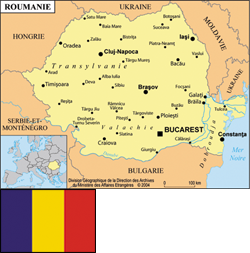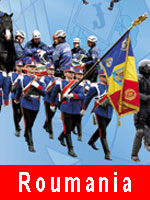
Romania Gendarmerie
|
1850 Ministry of attachment: Ministère des Affaires intérieures Workforce: 26 000 General manager: Colonel Sebastian CUCOS Address: 9 -11, Rue Jandarmeriei, secteur 1, Tél.: 021 409 65 34 Email: jandarmerie@mai.gov.ro Logistic and Contracts service: Colonel Robert MATEI Tél.: 021 409 60 34 Email: tehnic@jandarmeriaromana.ro Communication Manager: Chef d’escadron Marius MILITARU Tél.: 021 319 80 52 Email: presa_jr@mai.gov.ro 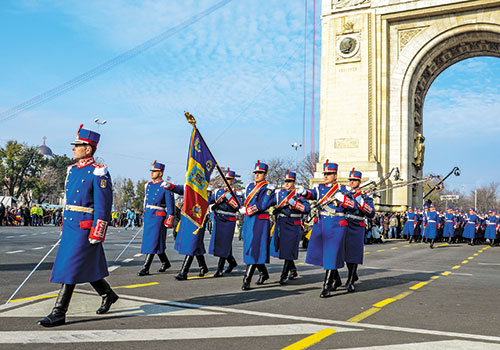
|
History
On April the 3rd, 1850, the prince of Moldavia, Grigore Alexandru Ghica, signs the birth certificate of the Rumanian Gendarmerie with his « Law for the reform of the servants in gendarmerie ». « The princely office and the instructions for the Gendarmerie in the Moldavia principality » of July 25th, 1850 determine the modalities of implementation of the law. After the Valachie and Moldavia union in 1859 under Alexandru Ioan Cuza, the Gendarmerie was subordinated to the war ministry as an independent armed force. The same year, the Moldavia gendarmes regiment is transformed into a legion. In 1863, the Gendarmerie of Bucharest is created. During the independence war (1877-1878) led at the Russian-Turkish war, the Rumanian Gendarmerie ensures the police to the armies and takes part in combat. After two law-making attempts in 1885 and 1887, the Rumanian Gendarmerie is reorganized by the law of August 30th, 1893. By renaming it rural Gendarmerie (Jandarmeria Rurala), the law confers it, according to the French model, a separate personality within the state institutions. Criticized for its lack of preparation in front of the 1907 great peasant revolt, the Rumanian Gendarmerie is reorganized by new laws in 1908, 1911 and 1913.
During the Second Balkan war in 1913, then during the World War I, the Gendarmerie ensures the fast mobilization of the Rumanian army, the military police tasks, the borders police and the important installations tasks. It organizes the evacuation during the 1916 retreat. The force is also committed in combats during the 1917 campaign, then supervise the demobilization of the army in July 1918, the remobilisation in October 1918 and the maintenance of law and order in the new territories after the armistice.
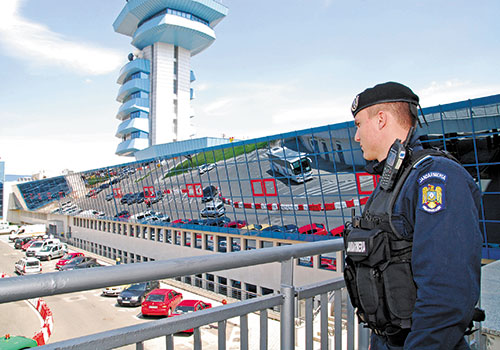
During the World War II, isolated after the French defeat, king Charles II gets closer to the Axis Forces, what prevents him from losing 1/3 of his territory. The Gendarmerie takes some new tasks of military police and participates in the Jews and the Gypsies deportation in Transnistria in 1941 and 1942.
After the war, the shifting of Romania in the Soviet bloc provokes the Gendarmerie disappearance in January 1949. The end of the cold war, then the dictator Ceausescu’s fall allow the revival of the Rumanian Gendarmerie restored on the 5th July 1990 following the French example, with a Gendarmerie organization specific law voted by the Parliament on June 18th, 1998. In 2004, the law n° 550/2004 redefines the Rumanian Gendarmerie organization and functioning.
Organization
Central Organization
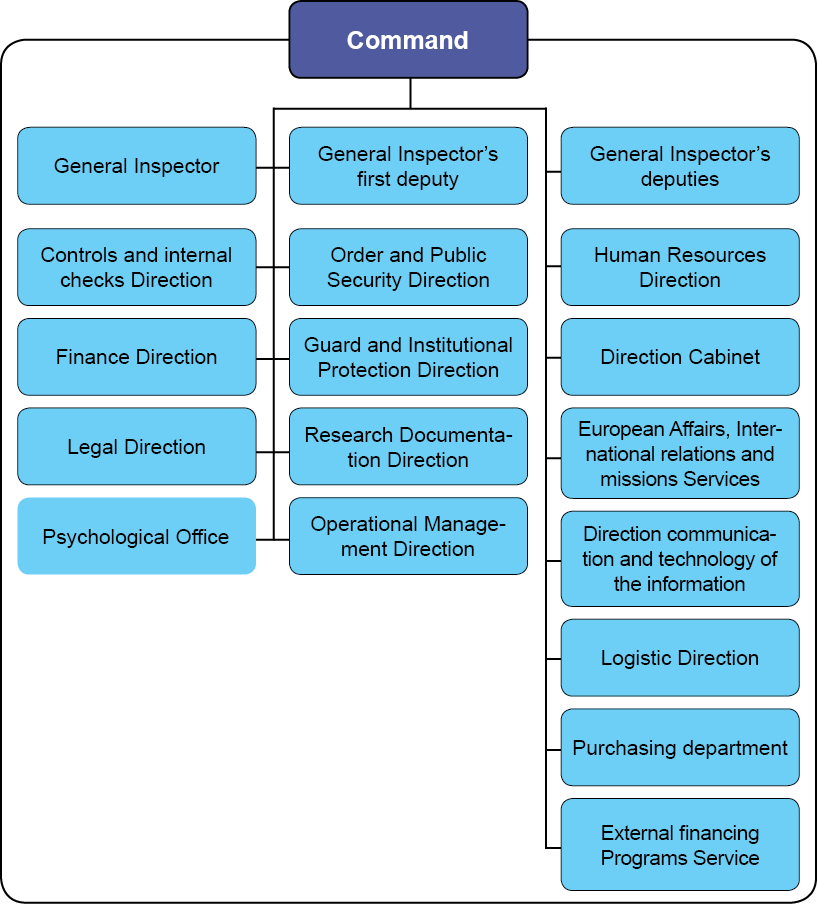
Territorial organization
The Rumanian Gendarmerie is organized on military principles, as forces and means unified system arranged according to the country administrative and territorial organization and in the following structure :
• Rumanian Gendarmerie General inspectorship ;
• Bucharest municipality Gendarmes’head office ;
• Gendarmerie Intervention Special Brigade ;
• Gendarmerie departmental inspectorships ;
• Staff’s formation and in-service training military institutions of education ;
• Units and specialized elementary units necessary in order to perform the Rumanian Gendarmerie specific missions, including support and logistics units and medical units created according to the law.
Specialized Training
• Gendarmes’mobile Groupings.
• Gendarmerie Intervention Special Brigade (BSIJ). Subordinated directly to the Rumanian Gendarmerie general inspectorship, it has a general territorial competence. It ensures the execution of the maintenance of law and order missions, the state fundamental institutions protection and the grave threats neutralization against those institutions, independently or in cooperation with other ministry of Internal affairs structures, in association with the defence system and the National Security other institutions.
Missions
According to the article 19 of the law n° 550/2004 concerning the Rumanian Gendarmerie organization and the functioning, this one is in charge of various missions.

Generally speaking, it has for mission to ensure the protection of the people and the properties.
Regarding administrative police, it is responsible for the police contingent/crowd control during important gatherings of people or official visits, the maintenance of law and order or its restoration when this one was disturbed, measures of order and protection of zones where can occur fires, explosions or other imminent dangers.
Regarding Criminal Investigation Department, it is in charge of the statement of offence, the necessary acts for initiating the criminal procedure, the research of escapees and deserters.
In a more specific way, it is in charge of :
• the fight against terrorism ;
• the protection of environment, the prevention and the intervention in front of technological or natural risks ;
• the surveillance of the mountainous zones, the Black Sea coast and the Danube Delta.
Staff
The Rumanian Gendarmerie accounts approximately 26 000 staffs, among whom 5 % of present women in all the fields of competence. There are no conscripts of the contingent. The great majority of the staff has a military status, whereas those who ensure the administrative support have a contract employees’statute. The staff’s quarter in barracks accommodated with the job does not exist.
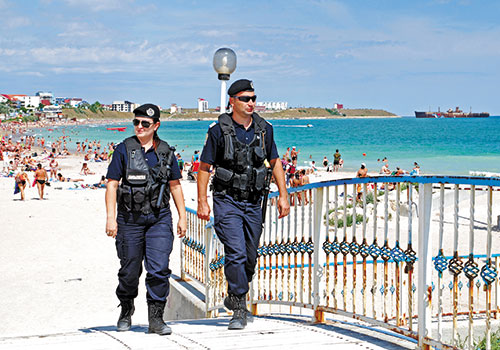
The candidates’recruitment for the Gendarmerie competitions takes place throughout the year, step by step, according to the following procedure :
• establish and educate the staff responsible for the recruitment process ;
• draft and distribute the recruitment notices in the local press, on the Internet, in the education institutions and the public places ;
• identify and attract a large number of people (men and women), including the Roma, who correspond to the conditions fixed by the legislation in force ;
• present the education institutions training offer and the number of the available places in the Gendarmerie units, in the Local public institutions and teaching institution points of access and information ;
• create a solid base of recruitment (quantitative and qualitative) in order to ensure a high number of candidates and a significant selection.
Training institutions
• Officers’training school « Mihai Viteazul » of the Rumanian Gendarmerie in Chiajna, near Bucharest.
• Non-commissioned officers’military academy gendarmes « Grigore Alexandru Ghica » in Dragasani.
• Non-commissioned officers’military academy gendarmes « Petru Rares » in Falticeni.
• Gendarmes training improvement Centre in Gheorgheni.
• Gendarmes Mountains training improvement Centre in Sinaia.
• Gendarmes training improvement Centre in Ochiuri.
Main equipment
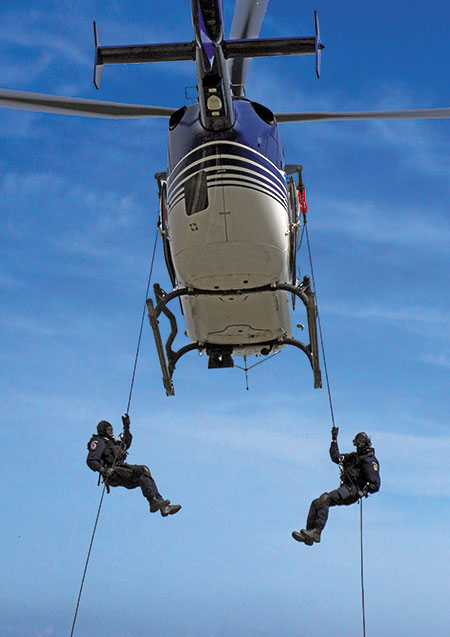
• Armament : pistol of calibre 7,65 x 17 mm Md. 74, pistol 9 x 18 mm Makarov, pistol 9 x 19 mm Jericho 941F, pistol 9 x 19 mm Glock G-17, automatic pistol 9 x 19 mm LP-7, automatic pistol 5,56 x 45 mm SG 553, submachine gun of calibre 7,62 x 39 mm Md. 63, submachine gun of calibre mm Md. 80, submachine gun of calibre 5,45 x 39 mm, PLS cof calibre 7,62 x 54 mm.
• Vehicles : Dacia Logan, Dacia Duster, Mercedes Benz Vito, Volkswagen Transporter, Opel Movano, Mercedes Benz Sprinter, Uro Vesa, Grivbuz G12TM280, Boat Bombard Commando C4.
Cooperation
The Rumanian Gendarmerie has been developing its international cooperation since the years 2000-2002. Presently, it cooperates in a bilateral and multilateral ways with 27 countries Forces with military status coming from the following 4 continents, Europe, Asia, America and Africa, and with 5 international organizations (UNO, NATO, EU, OSCE and OIF).
From the 2002, the Rumanian Gendarmerie became member of the FIEP, the presidency of which it took the responsibility in 2016. Since 2008, it is a member of the European Gendarmerie Forces. It has chaired the FIEP presidency during year 2015. In 2011, the Special Intervention Brigade "Vlad Tepes" became member of the ATLAS network. Since 2014, the Rumanian Gendarmerie is a founder member of the NATO SP CoE.
Over the years, the Rumanian Gendarmerie regular increase in power has allowed a total appropriation of its projects that it leads since a few years in a completely autonomous way, and gave it a strong national and international radiance and influence.
The French-Rumanian cooperation has for objectives today to favour on one hand the interoperability of institutions as well as to accompany the doctrinal evolutions and, on the other hand, to support the French language teaching within the Gendarmerie.
Since 2002, the Rumanian Gendarmerie also contributes to the external operations by participating, until 2011, in the UNMIK and EULEX missions deployed in KOSOVO, and, from 2011, in ISAF and RESOLUTE SUPPORT missions in Afghanistan.
Now the Rumanian Gendarmerie is participating in the following missions:
• NATO: RESOLUTE SUPPORT - Afghanistan;
• UNO: MINUSTAH - Haiti, MONUSCO - Congo, MINUSMA - Mali;
• EU: EUCAP Sahel - Mali, EUMM Georgia, EUAM Ukraine and FRONTEX.
As far as the French-Rumanian cooperation is concerned, it is necessary to specify that the cooperation between both gendarmeries was particularly intense from 2000s. Major structuring projects brought a support for the creation and for the development of the Officers’ training school "Mihai Viteazul" of the Rumanian Gendarmerie, of the Gendarmerie Advanced Training Centre in Ochiuri (MO/IP) and the Advanced Training Centre for the Gendarmes in Sinaia Mountain.
This mutual cooperation also became a reality by the conception of International Advanced Courses which gathered up to today Gendarmerie and police officers coming from 26 countries of 3 continents, 40 readers and 218 trainees from the following countries: Albania, Algeria, Armenia, Bosnia and Herzegovina, Bulgaria, China, Croatia, France, Georgia, Italy, Macedonia, Madagascar, Mali, Morocco, Montenegro, Poland, Moldavia, Czech republic, Romania, Jordan, Palestine, Serbia, Slovakia, Tunisia, Turkey and Ukraine.
In April 2015, the International Higher Education Course was validated as being in compliance with the standards of preliminary training for the deployment within the framework of the UNO Peace Preservation mission and received the UNO official recognition certificate for this formation. At the same time, it is necessary to underline the constant support given by the International Organization of the "Francophonie", which has financed since 2011 the participation of a number of officers coming from the African continent countries.
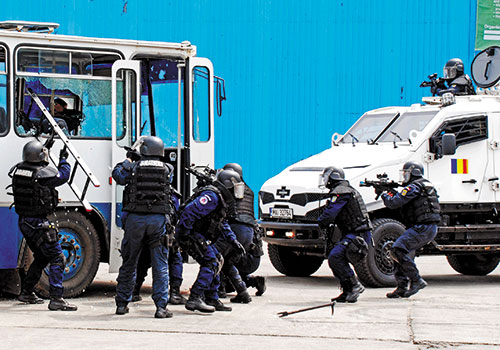
© The iconography was provided by the concerned gendarmeries

